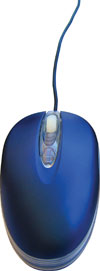

Digital surveillance systems that utilise Internet Protocol (IP) as a network transport mechanism are transforming the security industry, and many educational institutions are taking note.
New IP-based surveillance and security systems that network digital cameras to existing school Ethernet networks provide unprecedented intelligence, flexibility and ease-of-use. Equipment prices are reasonable, and the user interfaces and configuration utilities are simple and flexible. IP-based surveillance networks are also much more scalable (at reasonable costs) than traditional analogue and digital video recorder (DVR) systems.
As a result, IP surveillance solutions have gained popularity on campuses all over the world. Users monitor playground areas, corridors, halls, and classrooms with live feeds, remote alert systems, and compressed video archived on hard drives for easy evidence retrieval.
The IP standard offers simple installation and eliminates the need for specialised skills. IT administrators that handle the school's network can easily attach cameras and run the school's network Cat-5 cable or Wi-Fi access points to common routers and switches.
Educators, administrators and security personnel can then view, manage and record video locally and remotely using standard Internet browsers like Internet Explorer, Firefox and Safari. All this makes our educational institutions safer places.

Security challenges and issues in education settings
Teachers, students, visitors and parents all have an interest in safety and security measures. We want to deter violence, drug dealing and other criminal activities. Institutions also need to capture evidence in order to successfully prosecute criminals and sort out incidents.
Technology can help by providing innovative ways to protect those on campus. With the right systems in place, harassment, threats, actual violence, and theft decline significantly. Visible cameras on campus deter criminal activity. Recorded evidence helps campus deter liability claims and counter-claims. Word of increased campus security spreads throughout communities. Students, faculty and visitors that recognise increased security measures are less likely to violate rules. Also, studies show that recorded evidence produces admission of guilt, and parents often back down from defensive, protective postures when shown recorded incidents of their children's infractions.
Traditional analogue surveillance, with in-person camera monitoring and live feeds, is time consuming and costly. Monitoring personnel often lose focus and miss details after only 20 minutes of screen viewing.
The process is boring, especially when personnel must monitor multiple monitors. Tape storage and physical back-up procedures can be costly, as well.
Modern educational institutions need IP-based surveillance systems that:
* Send automated alerts and record video when security events occur.
* Record to low cost disk storage.
* Index and search-enable archived video and audio.
* Flexibly adjust to handle different schedules, personnel alerts, device alerts and granular event triggers (video and audio).
Solutions that offer these benefits are available with minimal modification to existing IP networks. Existing IT staff can easily install cameras and configure the system.

IP surveillance solutions
IP surveillance systems with automatic alerts, built-in motion detection and integrated storage features, can easily satisfy the needs of even the most complex, sprawling campuses. With the right solution in place, security personnel, administrators, and even educators gain accurate, up-to-the-minute surveillance alerts and updates via e-mail, SMS, pager, cellphone or any other IP-enabled device. Standardised IP equipment lowers maintenance and configuration expense, and institutions can free up manpower by monitoring large congregation areas via digital cameras.
The solution supports security initiatives in a wide variety of settings, including:
* Classrooms.
* Parking lots and driveways.
* Parking structures.
* Cafeterias and restaurants.
* Patio and entry areas.
* Hallways and walkways.
* Gymnasiums.
* Administrative offices.
* Band hall.
* School stores.
* Computer rooms.
* Science laboratories.
* Supply closets.
Solutions for low-light applications, high indoor and outdoor temperatures, and low indoor and outdoor temperatures are readily available.
Key IP surveillance benefits
* Utilises existing IP infrastructure.
* Highly scalable.
* Flexible camera placement: PoE eliminates need for local power source; Wi-Fi eliminates need for hard-wired Ethernet cable.
* Remote viewing from virtually anywhere/anytime via a standard Web browser.
* Standards-based, allowing multivendor solutions and integration.
* Better image quality than closed circuit TV (CCTV) analogue systems.
* Open storage and server systems scale easily and cheaply, with no need for specialised recording equipment or training.
* Secure: data can be encrypted across the network, so only the cameras and servers know what kind of packets to expect across the system. Without the proper authentication keys, outsiders cannot break into the network to steal video data or feed false video into the system. Also, any interruption to the data stream can automatically trigger alarms and alerts.

IP surveillance network technology
IP surveillance systems digitise video streams at each camera on the network, and this information is then transferred over a standard wired or wireless Internet Protocol (IP) network. Unlike traditional analogue closed-circuit television (CCTV) systems that take analogue signals and digitise them on the back end, and require expensive point-to-point coax cabling, IP surveillance systems digitise at the camera and send a digital signal across a common Ethernet network. It is a decentralised data encoding system that sends binary data to a centralised, standardised network - the same one used for e-mail, Web pages, FTP, IM and so on.
Users can view network camera output in its simplest form in a Web browser or via more sophisticated security software solutions. If analogue cameras are already installed, video servers can be used to digitise the analogue signal, incorporating legacy equipment into the wireless IP surveillance system and enabling those images to be seen anywhere.
Since networked surveillance is IP-based, users can monitor, store and archive video, audio and associated application data over the Internet or private intranets. This is one of its big advantages over conventional analogue closed circuit TV systems. Anyone with access clearance and a standard browser can monitor video from any location that has Internet connectivity - whether that is via a desktop, a laptop, a digital cellphone, a Wi-Fi connected PDA or any other IP connected device. Digital cameras can track licence plates, faces, and motion events while immediately alerting interested parties when certain conditions arise or specific thresholds are reached. Most IP surveillance cameras come with monitoring and management software that lets you trigger alarms and e-mail alerts when certain events occur. For example, you can designate motion detection areas within a frame that generate alerts when motion occurs. Or you can set the system to begin recording when certain events occur or timers are set. Examples of motion events might include a person walking into the frame or a car driving across a designated area.
IP surveillance equipment is very flexible - from both software and hardware standpoints. As a result, the solution is easily integrated into other systems like POS, access control, and building management systems, as well as fire alarm and burglar alarm systems.
Networking equipment and IP protocols adhere to open standards, so the IP surveillance system itself costs less than DVR and CCTV set-ups. In addition, the technology conveniently integrates with open Power over Ethernet (PoE) and wireless standards. PoE makes installation easy, because with PoE cameras and switches enable camera placement where power outlets are not available.
All the parts of the system are standards-based, so picking and choosing hardware and software solutions is easy. The model is future-proof and highly scalable, so you never get locked into a proprietary vendor solution, and you can easily expand, upgrade, or modify the system as needed. Organisations can easily add IP cameras to existing networks one by one, at any time. This pertains to additions on the local network and for offsite additions that communicate over the Internet. Storage servers can also be added on an as-required basis.

Digital camera technology
Facilities and campuses with IP networks (wired or wireless) can easily add IP cameras. These digital cameras perform many of the same functions as standard analogue CCTV cameras. However, they offer extended functionality and significant cost savings. Since IP cameras connect directly into existing networks, educational institutions can save a lot of money by avoiding the coax cable wiring that CCTV requires.
The cameras can be placed almost anywhere. Enclosures with built-in fans and heaters enable placement in harsh environments. They connect to LANs, WANs, modems, wireless access points (APs) or even cellphones. There is no need for a direct connection to a computer or a DVR, because the IP protocol routes data to any server, router, storage network or other IP device.
Cameras designed for IP surveillance systems typically include a lens, optical filter, image sensor, image digitiser and image compressor. They can be used over the Web, but they are not really considered 'Webcams', which are those small, usually USB connected, low-tech cameras designed for online socialising. Rather, IP-based cameras connect directly to IP networks, record at higher frame rates, and generally have better resolution than Webcams. They can pan, tilt and zoom, and many have one-way or two-way audio capabilities.
IP cameras offer progressive-scan, MPEG technology that is superior to analogue camera image quality. Video is 100% digital at capture, which eliminates video conversion that causes image degradation. This is important in scenarios where surveillance and monitoring applications require clarity and certainty to support security goals.
IP cameras come equipped with processors that capture and compress video for network transport. Image quality varies as you choose between compression and file size advantages and image quality. It is a trade-off. Image quality varies depending upon optics and image sensors, available processing power, and compression algorithm sophistication. Generally, features to examine while comparing models include:
* Image sensor type.
* Low light capabilities.
* Lens replacement capability.
* Image resolution.
* File size and bandwidth requirements.

Easy-install Wi-Fi cameras
Wi-Fi IP surveillance cameras operate as both Wi-Fi and wired Ethernet cameras. You set them up either way depending upon your needs and the locations of your wired Ethernet. Once you set up one Wi-Fi camera, you can plug the rest in and configure them without having to run the set-up utilities again. You can get a large facility installed really quickly this way. Simply plug the cameras into a power outlet and Ethernet jack, discover them with the client utility, and then configure the Wi-Fi settings according to your router's settings. You then unplug the Ethernet cables from the cameras you want to use in Wi-Fi mode, and you are set. The Wi-Fi cameras can be positioned anywhere in range of your wireless router and anywhere there is a power source. You can move them and power them down at any time without affecting their IP addresses. Once they are plugged back in to power, they are fully operational and discovered.
Storage technology
IP surveillance video is typically recorded locally and stored both locally and off-campus. Common, low-cost hard drives store the images. Storage area network (SAN) or network attached storage (NAS) systems are employed for high-volume, large file size back-up and recovery scenarios. Files from multiple locations are aggregated, managed, and backed up from one central location.
Video can be securely accessed anywhere, at any time, enabling faster response, investigation, and resolution of incidents. An Internet connection and the appropriate access privileges are the only requirements. Various encryption schemes can be used to secure data, and wire line interruptions can be easily detected within the network.
For more information contact D-Link, +27 (0)12 665 2165, [email protected], www.dlink.co.za
| Tel: | +27 12 741 2000 |
| Email: | [email protected] |
| www: | www.d-link.co.za |
| Articles: | More information and articles about D-Link Africa |
© Technews Publishing (Pty) Ltd. | All Rights Reserved.